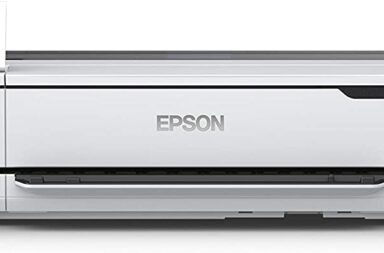From book covers to product packaging, it’s hard to imagine a world without the influence of graphic design. But its beginnings were quite humble, and its development is inextricably linked with print technology. A true tour de force of creativity and technology, the history of graphic design is long and complex with fascinating characters throughout.
Throughout its evolution, graphic design has been intrinsically shaped by industry developments such as the rise in printing presses or advances in digital technologies like Photoshop—allowing for a level of precision unheard-of centuries before. Moreover, while some processes have become much simpler over time—the basics now accessible from a laptop or tablet rather than needing access to press machinery—graphic design has brushed off challenges posed by technological innovation and found new outlets to thrive in through dynamic visual storytelling techniques.
In this article we’ll be giving you an overview of this incredible journey so far: tracing back from early roots where illustration met propaganda right up until modern times where creative artistry meets jarring political publications on social media platforms. We’ll discuss how prior leaps forward powered by print technology gave life to iconic everyday products such as branding logos and album covers: while equally addressing the darker moments such as burgeoning anti-girl culture during society’s industrial moments which inspired even more revolutionary designs! Finally we’ll consider how pandemic lockdowns have posed both familiar and unique challenges for creatives everywhere (both old pros &: budding talents) designing for our brave
1. Early Origins Of Graphic Design
Graphic design has a long and varied history, with evidence of its use stretching back to caveman times. While the term “graphic design” first appeared in 1922, it was not until 1903 that the Wiener Werkstätte (Vienna Workshop) was established by Koloman Moser, Josef Hoffmann and Fritz Waerndorfer. This collective brought together architects, artists and designers working in ceramics, fashion, silverware and furniture as well as graphic arts.
The development of moveable type printing in the 15th century is often seen as a major milestone for graphic design but earlier developments such as writing can also be considered part of this longer history of communication. Writing itself dates back to ancient times when hieroglyphs were used to record information on papyrus scrolls or stone tablets while calligraphy developed from medieval manuscripts into an art form during the Renaissance period. The Qur’an is another example of early written communication which employed intricate patterns and symbols alongside text to convey meaning.
Graphic design itself is defined as an art form which uses visual elements such as typography, images symbols and colours to communicate messages effectively with audiences: it may also be referred to more broadly under ‘visual communications’ due its role in giving shape or form – for example through book designs or logos –to information being conveyed. Logos have their own unique history too: they evolved from family crests used by ancient civilizations before developing further during Medieval times when shops began using signage outside their premises for identification purposes. It wasn’t until mass printing became available that modern logo designs started emerging around 1900s onwards.
Overall then, graphic design has been around since prehistoric times although it wasn’t until much later that these practices were formalised into what we now recognise today. From early written forms such as hieroglyphs, calligraphy, manuscripts right up till modern day logos: each era has contributed something unique towards how we use visuals today within our communications.
2. The Development Of Print Technology And Graphic Design
The development of print technology and graphic design has been a long process, beginning with the invention of movable type printing in 1040 by Bi Sheng. This revolutionary invention allowed for the mass production of books and other printed materials, which had previously been laboriously hand-copied. The Renaissance saw a revival of classical learning from ancient Greece and Rome throughout Europe, largely due to this new form of printing.
In the Middle Ages, typography started to take off as humanity began exploring its aesthetic horizons through letters and words themselves. William Addison Dwiggins coined the term “graphic design” in 1922 when he wrote an essay about how he organized visuals in his works as a book designer. However, we can go back even further than that for our history of graphic design: it is often traced back to moveable-type printing from 15th century Europe but earlier developments related to writing and printing should also be considered part of this longer history.
One such technique is wood block printing which was used extensively both in Europe and Asia before moveable type was invented. It is a relief process where an image is carved into wood then pressed onto paper with ink transferring over at the same time – creating prints or copies quickly without needing multiple blocks per character like Asian languages would have needed with movable type presses alone.
The Industrial Revolution marked another major milestone in print technology development when innovative technologies were created at unprecedented rates including lithography – one example being Song dynasty artisan Bi Sheng who created the first movable type press out of porcelain – allowing for faster production processes than ever before seen on such scale while still maintaining quality standards across all products made using these methods.. With increased access to information through print media came more opportunities for people to learn about different cultures around them leading up until today’s modern digital age where communication has become easier than ever before thanks largely due advances made during this period time!
3. Modern Technology And Graphic Design
Modern technology has revolutionized the field of graphic design. In the 1950s, modernism became a major influence in graphic design, with designers seeking to create artwork that reflects the nature of modern society. One pioneer of this approach was E. McKnight Kauffer, who was one of the first designers to understand how symbolic forms from Cubist and Futurist painting could be applied to graphic design. His work helped set a new standard for creating designs that are both visually appealing and communicative in their intent.
The introduction of digital technologies has allowed for even greater possibilities when it comes to creating graphics and visuals for communication purposes. With computer programs such as Adobe Photoshop or Illustrator, designers can easily manipulate images and text into whatever form they desire without having to worry about physical limitations like paper size or color restrictions imposed by traditional printing methods. This allows them more freedom when designing logos, posters, websites, magazines and other materials used in marketing campaigns or public relations efforts. Furthermore, digital tools allow for faster production times since there is no need for manual labor-intensive processes like typesetting or plate making which were necessary before computers came along: this means projects can be completed much quicker than before while still maintaining high quality standards due to advanced editing capabilities available through software programs today
In addition to these advantages offered by digital technologies in terms of speed and flexibility during production stages: they have also made it easier than ever before for people all over the world collaborate on projects together regardless if they’re located across town or across continents! Through cloud-based services such as Dropbox or Google Drive: teams working on different aspects of a project can share files with each other quickly so everyone stays up-to-date on progress being made at any given time throughout its completion process – something which would not have been possible prior without expensive long distance phone calls between collaborators every few days (or weeks).
Finally: thanks largely due advancements in technology over recent decades – we now live an age where anyone with access internet connection can learn how become proficient designer themselves using tutorials found online! From learning basics concepts behind composition &: typography all way up complex coding languages needed create interactive websites – there’s plethora resources out there help people get started their own journey becoming professional designer if desired! All these factors combined make clear why modern technology has had such profound impact upon field graphic design – allowing us explore new creative possibilities never thought possible just few short years ago!
4. Graphic Design As An Art Form
Graphic design is a form of art that has been around for centuries. It is an expression of creativity and imagination, allowing people to explore their ideas in a visual way. The term “graphic design” first appeared in 1922 when William Addison Dwiggins wrote his essay “New Kind of Printing Calls for New Design”. Since then, the technology available to designers has advanced significantly, opening up new possibilities for artistic and commercial applications.
The history of graphic design can be traced back to ancient times when people used symbols and images on cave walls or pottery as forms of communication or decoration. As time progressed, more sophisticated methods were developed such as woodblock printing which allowed multiple copies to be made from one original image. This was followed by lithography which enabled large-scale production with greater accuracy than ever before possible. By the 20th century, photography had become commonplace and digital technologies began to emerge giving rise to modern graphic design techniques such as computer aided illustration (CAD) and desktop publishing (DTP).
Today, graphic designers have access to powerful tools that allow them create stunning visuals with ease: however it takes skillful hands guided by creative minds in order bring these designs into reality. Graphic designers must understand how different elements interact together visually so they can create compositions that are pleasing yet effective at conveying messages or ideas clearly without being too cluttered or overwhelming on the eye. They also need knowledge about color theory so they can choose colors wisely according to what works best for each project while still taking into account branding guidelines if necessary. In addition, typography plays an important role in any piece of work since it helps set the tone, mood,and personality behind each creation.
Graphic design is not just about creating aesthetically pleasing visuals but also involves problem solving skills where designers must come up with solutions based on user needs while considering factors like usability, accessibility, scalability etc. Good graphic designs should always strive towards achieving balance between aesthetics and functionality: this means understanding how certain elements will affect users emotionally while still making sure everything functions properly. Ultimately good graphics should evoke emotion from viewers whether it’s joy, sadness or curiosity – all these feelings help drive engagement which leads us back full circle why we chose this art form in the first place: expressing ourselves through art!
5. The Impact Of The Digital Age On Graphic Design
The digital age has had a profound impact on the field of graphic design. Before the 1980s and early ’90s, graphic design was based largely on handicraft processes such as lithography. However, with the advent of computers and software such as MacPaint™ by Bill Atkinson and Susan Kare, these processes were revolutionized. Digital tools allowed for much more efficient creation of designs than ever before possible.
The origins of graphic design can be traced back to cave paintings from around 38,000 BC which mainly featured animals, handprints, weapons and other references to hunting. It wasn’t until 1440 when Johannes Gutenberg invented the printing press that proper graphic design began to emerge in its modern form. The industrial revolution further increased efficiency in production through new technologies like lithography which enabled mass production of printed materials such as newspapers or books at a much lower cost than before possible.
Fast forward to today where technology has advanced even further with computers becoming commonplace in households all over the world along with access to high speed internet connections allowing us to communicate instantaneously across vast distances without having ever met each other face-to-face or even speak directly over phone lines: this is something that would have been unimaginable just a few decades ago! This digital transformation has completely changed how we work, communicate and socialize – it’s no surprise then that it’s also had an immense effect on how we create graphics too!
Graphic designers now have access to powerful computer programs like Adobe Photoshop or Illustrator which allow them not only create stunning visuals but also manipulate existing images quickly and easily while still maintaining their original quality: they can also use 3D modelling software for creating detailed 3D models from scratch or manipulating existing ones into something entirely different! Furthermore web developers are able to build complex websites using HTML5 &: CSS3 coding languages enabling them craft beautiful user interfaces (UI) for users interact with online content seamlessly regardless if they’re using desktop PCs mobile devices etc… All these advancements make it easier than ever before for designers produce amazing works art faster timeframes compared what used take years ago due manual labour involved those processes!
Finally there are countless online resources available nowadays ranging tutorials blogs forums etc… where one can learn about various aspects related designing whether be typography colour theory layout principles animation techniques etc… These provide great opportunities anyone interested getting into field gain knowledge skills necessary become successful designer without having attend expensive classes universities so long as they willing put effort dedication required succeed profession itself highly competitive market because everyone trying stand out competition nowadays thanks advances technology made accessible general public almost anyone who wants could get started creating graphics relatively low costs compared what used cost past due availability cheap powerful hardware software tools available today!
6. The Role Of Graphic Design In Society Today
Graphic design plays an important role in society today. It is used to communicate ideas, create a visual representation of messages, and inform and inspire consumers. Through the use of computer software or by hand, graphic designers are able to produce designs for multiple mediums such as brochures, magazines, corporate reports, advertisements and more. Graphic design has come a long way since its traditional hand-drawn glyphs and imagery of decades past with the launch of the Mac computer giving people access to hundreds of tools that make graphic design more efficient and complex at the same time.
The impact that graphic design has on creativity is undeniable: it helps individuals become better at different things while also enabling them to be more creative in their work. This can be seen through how it affects our relationships with other people as well as how it can help us express ourselves visually without having to rely solely on words or language alone.
Gender equality within the field of graphic design hasn’t always been great due largely in part because it’s traditionally been male-dominated industry: however women have played an equally significant role in shaping this form art over time too which should not be overlooked or forgotten about either! Alice Rawsthorn’s book explains how product interactive designs help—and sometimes unintentionally hinder—humans which shows just how much influence this type of work can have on society today when done correctly.
Overall there’s no denying that graphic design plays a huge role in modern day society from helping us communicate ideas effectively through visuals instead words alone all the way up to influencing gender equality within certain industries like never before! It’s clear that this form art is here stay for many years come so we must continue strive towards making sure everyone gets equal opportunities regardless their gender identity if we want see positive changes take place across board moving forward into future!
7. Challenges Facing The Future Of Graphic Design
The future of graphic design is an exciting yet daunting prospect. As brand-building technologies advance, designers must stay up to date on the latest trends and challenges in order to remain competitive. One of the most pressing issues facing graphic designers is staying ahead of the curve when it comes to technology. With new tools and software being released every day, it can be difficult for a designer to keep up with all the changes and advancements in their field. Additionally, as more companies move towards digital marketing strategies, there is an increased demand for web design skills that many traditional graphic designers may not possess. This means that those who wish to stay relevant must invest time into learning these new techniques or risk becoming obsolete in this ever-evolving industry.
Another challenge facing graphic designers today is finding ways to stand out from other professionals in their field while still creating work that meets client expectations. Many clients are looking for unique designs that will help them stand out from competitors but also need something they can easily understand and relate too: this requires a delicate balance between creativity and practicality which can be difficult for some designers achieve without compromising one or the other aspects of their work. Furthermore, with so much competition within the industry it’s important for a designer’s portfolio to showcase their best work if they want potential employers or clients take notice: however, due copyright laws many times original artwork cannot be used which makes it even harder for someone starting out build a strong portfolio quickly enough make themselves competitive within market place.
Finally, another challenge faced by those working within this profession involves understanding how different cultures perceive visual communication differently than others do: what might seem like an effective message visually speaking here could have completely different implications elsewhere due cultural differences such as language barriers or varying social norms. It’s important therefore,for any successful designer,to have knowledge about various cultures before attempting create visuals intended reach global audiences.
Conclusion
In conclusion,the future of graphic design presents both opportunities excitement along with challenges. However, with proper preparation dedication success within this field remains possible regardless these obstacles. By staying current on technology trends investing time into building strong portfolios familiarizing oneself with diverse cultures anyone interested pursuing career graphics has chance succeed despite whatever difficulties come way.


